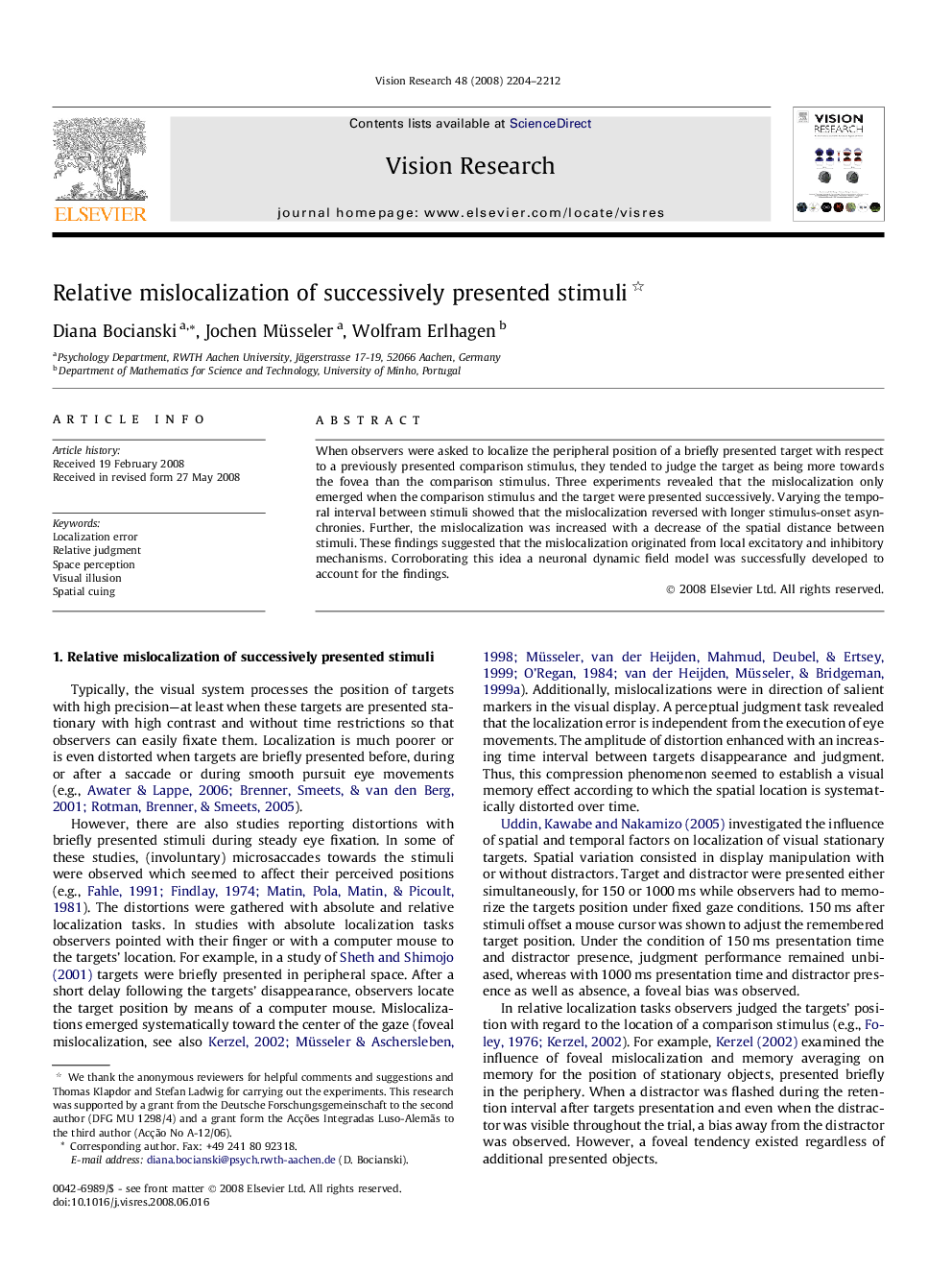| Article ID | Journal | Published Year | Pages | File Type |
|---|---|---|---|---|
| 4035554 | Vision Research | 2008 | 9 Pages |
When observers were asked to localize the peripheral position of a briefly presented target with respect to a previously presented comparison stimulus, they tended to judge the target as being more towards the fovea than the comparison stimulus. Three experiments revealed that the mislocalization only emerged when the comparison stimulus and the target were presented successively. Varying the temporal interval between stimuli showed that the mislocalization reversed with longer stimulus-onset asynchronies. Further, the mislocalization was increased with a decrease of the spatial distance between stimuli. These findings suggested that the mislocalization originated from local excitatory and inhibitory mechanisms. Corroborating this idea a neuronal dynamic field model was successfully developed to account for the findings.
